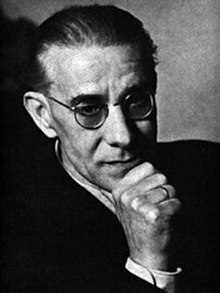Johannes Wilde
| Johannes Wilde | |
|---|---|

Portrait photograph of Johannes Wilde by Ursula Pariser
|
|
| Born |
Janós Wilde 2 July 1891 Budapest, Hungary |
| Died | 13 September 1970 Dulwich, England |
| Nationality | Hungarian, Austrian, British |
| Occupation | art historian |
| Known for | catalogue of Michelangelo drawings in the National Gallery, London |
Johannes Wilde CBE (2 July 1891 – 13 September 1970) was a Hungarian art historian and teacher of art history. He later became an Austrian, and then a British, citizen. He was a noted expert on the drawings of Michelangelo. Wilde was a pioneer of the use of X-rays as a tool for the study of both the creation and the state of conservation of paintings. From 1948 to 1958 he was deputy director of the Courtauld Institute of Art in London.
Johannes Wilde was born János Wilde on 2 July 1891 in Budapest, Hungary. He was the last of six children of Richard Wilde (died 1912) and his wife Rosa neé Somlyaky (died 1928). From 1909 to 1914 he studied art, philosophy and archeology at the University of Budapest and then from 1915 to 1917 studied for a doctorate under Max Dvořák at the University of Vienna, defending his thesis summa cum laude in July 1918. He returned to Budapest and was until 1922 an assistant to Simon Meller in the department of prints and drawings of the Museum of Fine Arts.
In the brief period of the Hungarian Soviet Republic of Béla Kun in 1919, Wilde worked with Frederick Antal on the sequestration of privately owned works of art of national significance.
Max Dvořák died in February 1921, and in 1922 Wilde moved permanently to Vienna in order to work with Carl Maria Swoboda on a collected edition of Dvořák's writings. This was published between 1924 and 1929. He became an Austrian citizen in 1928, and on 6 February 1930 married the art historian Julia Gyárfás.
From 1923 Wilde worked as an assistant Keeper, and later as a Keeper, at the Kunsthistorisches Museum of Vienna, where he worked principally on Italian Renaissance paintings. Many of the paintings in the collections of the museum were in a poor state of conservation in the Hofburg. He carefully researched and catalogued the Italian paintings, many of which were documented in David Teniers the Younger's Theatrum Pictorium, though with incorrect attributions. It was Wilde who discovered that the hitherto separate paintings by Antonello da Messina in the collection "St. Nicolas and a Female Saint" (attributed by Teniers to Bellini), "The Virgin and Child Enthroned", and "St. Dominic and St. Ursula", were all fragments of one altarpiece and he oversaw the reconconstruction of the San Cassiano Altarpiece in 1928.
...
Wikipedia
